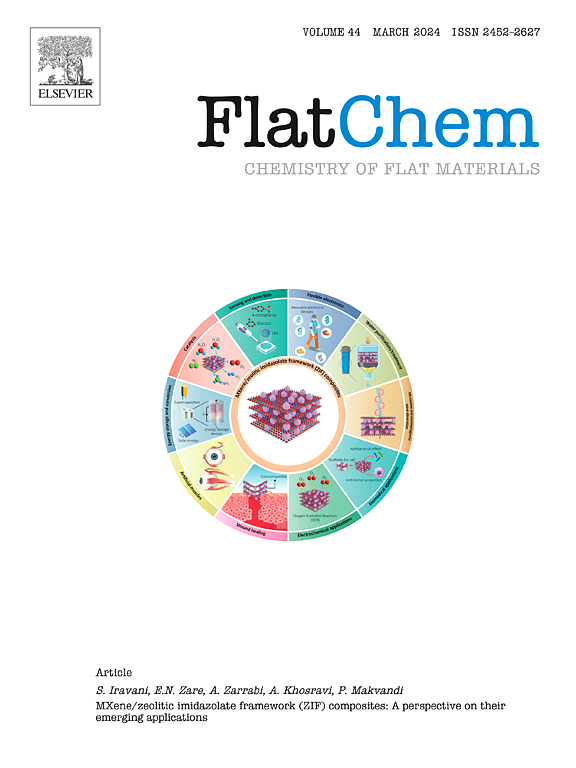Preparation, characterization, and in vitro release studies of multifunctional nanoformulations designed by functionalized graphene nanosheets with natural compounds
IF 6.2
3区 材料科学
Q2 CHEMISTRY, PHYSICAL
引用次数: 0
Abstract
The use of graphene-based nanomaterials in nanomedicine continues to expand, particularly in drug delivery nanoplatforms that provide advantages like multifunctional designs, prolonged release of drugs, cancer targeting, etc. There is a lack of data to develop graphene nanosheets for natural compounds with anticancer properties. To achieve the targeted delivery system's final objective, we prepared two different types of nanosheets: nano-sized graphene (NG) and nanosized graphene oxide (NGO). They were functionalized with PEG-NH2 and formulated with three natural anticancer compounds: piperine (PIP), artemisinin (ART), and emodin (EMO). Finally, folic acid-conjugated enteric coating (Eudragit S100 polymer) was achieved (ES100-FA). The enteric coating changed the mean size distribution of the two materials by less than 280 nm and all nanoformulations displayed negative zeta potential. The PEG-NH2 nanosheets demonstrated a high drug loading rate, loading capacity, and entrapment efficiency. Compared to ART nanoformulations (< 24 h), PIP and EMO-nanoformulations showed long-term sustained release throughout 96 h, according to in vitro drug release experiments. The release profiles of PIP, ART, and EMO-based nanoformulations showed a pH-dependent release effect and different release properties. This developed system showed the potential of graphene nanosheets to construct multifunctional nanoplatform and sustain the release of plant-derived natural therapeutic compounds.

天然化合物功能化石墨烯纳米片设计的多功能纳米制剂的制备、表征和体外释放研究
石墨烯基纳米材料在纳米医学中的应用不断扩大,特别是在药物递送纳米平台方面,它具有多功能设计、延长药物释放时间、靶向癌症等优点。开发具有抗癌特性的天然化合物的石墨烯纳米片缺乏数据。为了实现靶向递送系统的最终目标,我们制备了两种不同类型的纳米片:纳米级石墨烯(NG)和纳米级氧化石墨烯(NGO)。它们被PEG-NH2功能化,并与三种天然抗癌化合物:胡椒碱(PIP)、青蒿素(ART)和大黄素(EMO)组成。最终制成叶酸共轭肠溶膜(Eudragit S100聚合物)(ES100-FA)。肠溶包衣对两种材料的平均尺寸分布的改变小于280 nm,并且所有纳米配方都表现出负的zeta电位。PEG-NH2纳米片具有较高的载药率、载药量和包封效率。与ART纳米制剂相比(<;体外释药实验表明,PIP和emo纳米制剂在96 h内均表现出长期缓释。PIP、ART和emo纳米制剂的释放曲线显示出ph依赖的释放效应和不同的释放特性。该系统显示了石墨烯纳米片在构建多功能纳米平台和维持植物源性天然治疗化合物释放方面的潜力。
本文章由计算机程序翻译,如有差异,请以英文原文为准。
求助全文
约1分钟内获得全文
求助全文
来源期刊

FlatChem
Multiple-
CiteScore
8.40
自引率
6.50%
发文量
104
审稿时长
26 days
期刊介绍:
FlatChem - Chemistry of Flat Materials, a new voice in the community, publishes original and significant, cutting-edge research related to the chemistry of graphene and related 2D & layered materials. The overall aim of the journal is to combine the chemistry and applications of these materials, where the submission of communications, full papers, and concepts should contain chemistry in a materials context, which can be both experimental and/or theoretical. In addition to original research articles, FlatChem also offers reviews, minireviews, highlights and perspectives on the future of this research area with the scientific leaders in fields related to Flat Materials. Topics of interest include, but are not limited to, the following: -Design, synthesis, applications and investigation of graphene, graphene related materials and other 2D & layered materials (for example Silicene, Germanene, Phosphorene, MXenes, Boron nitride, Transition metal dichalcogenides) -Characterization of these materials using all forms of spectroscopy and microscopy techniques -Chemical modification or functionalization and dispersion of these materials, as well as interactions with other materials -Exploring the surface chemistry of these materials for applications in: Sensors or detectors in electrochemical/Lab on a Chip devices, Composite materials, Membranes, Environment technology, Catalysis for energy storage and conversion (for example fuel cells, supercapacitors, batteries, hydrogen storage), Biomedical technology (drug delivery, biosensing, bioimaging)
 求助内容:
求助内容: 应助结果提醒方式:
应助结果提醒方式:


